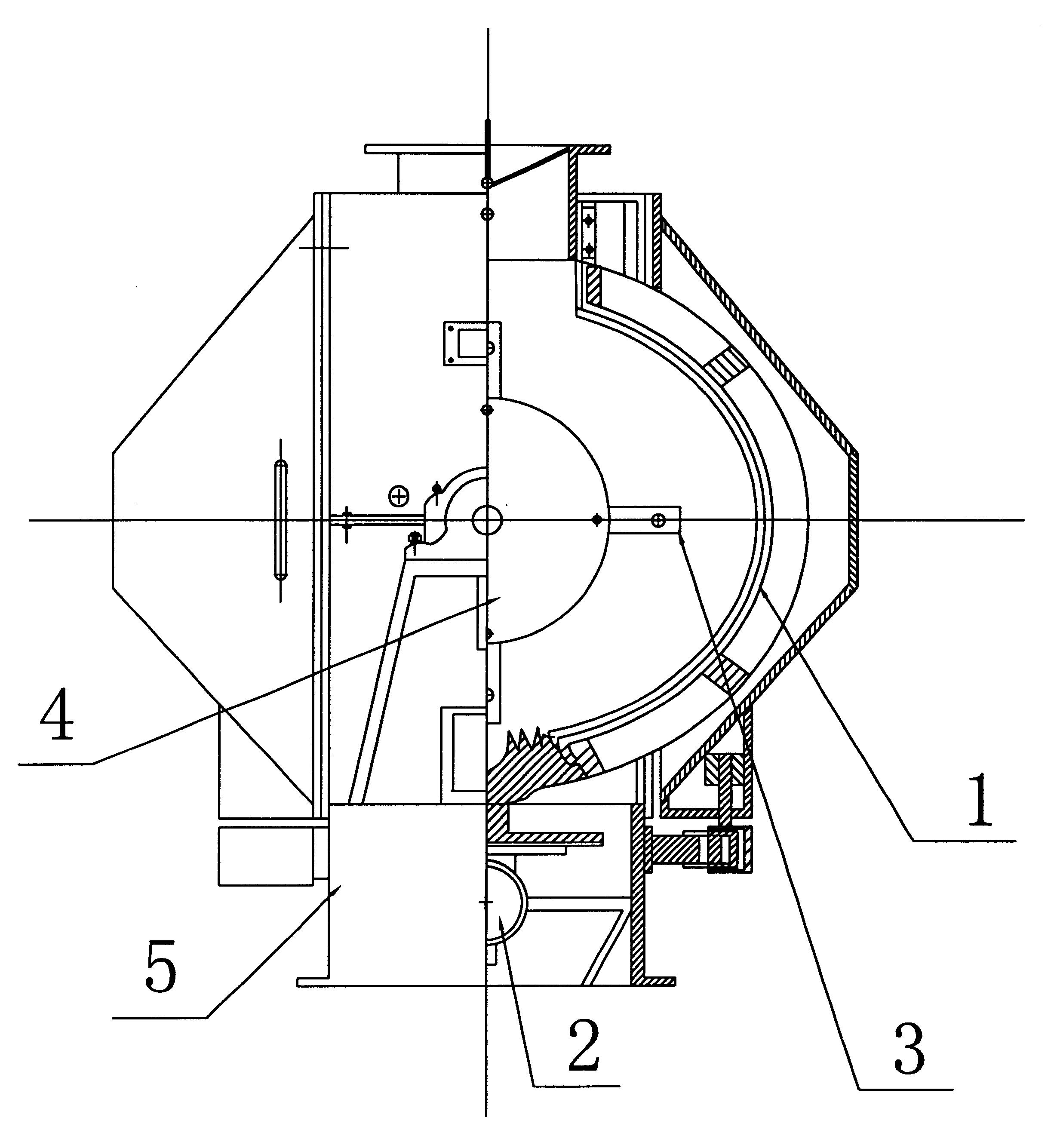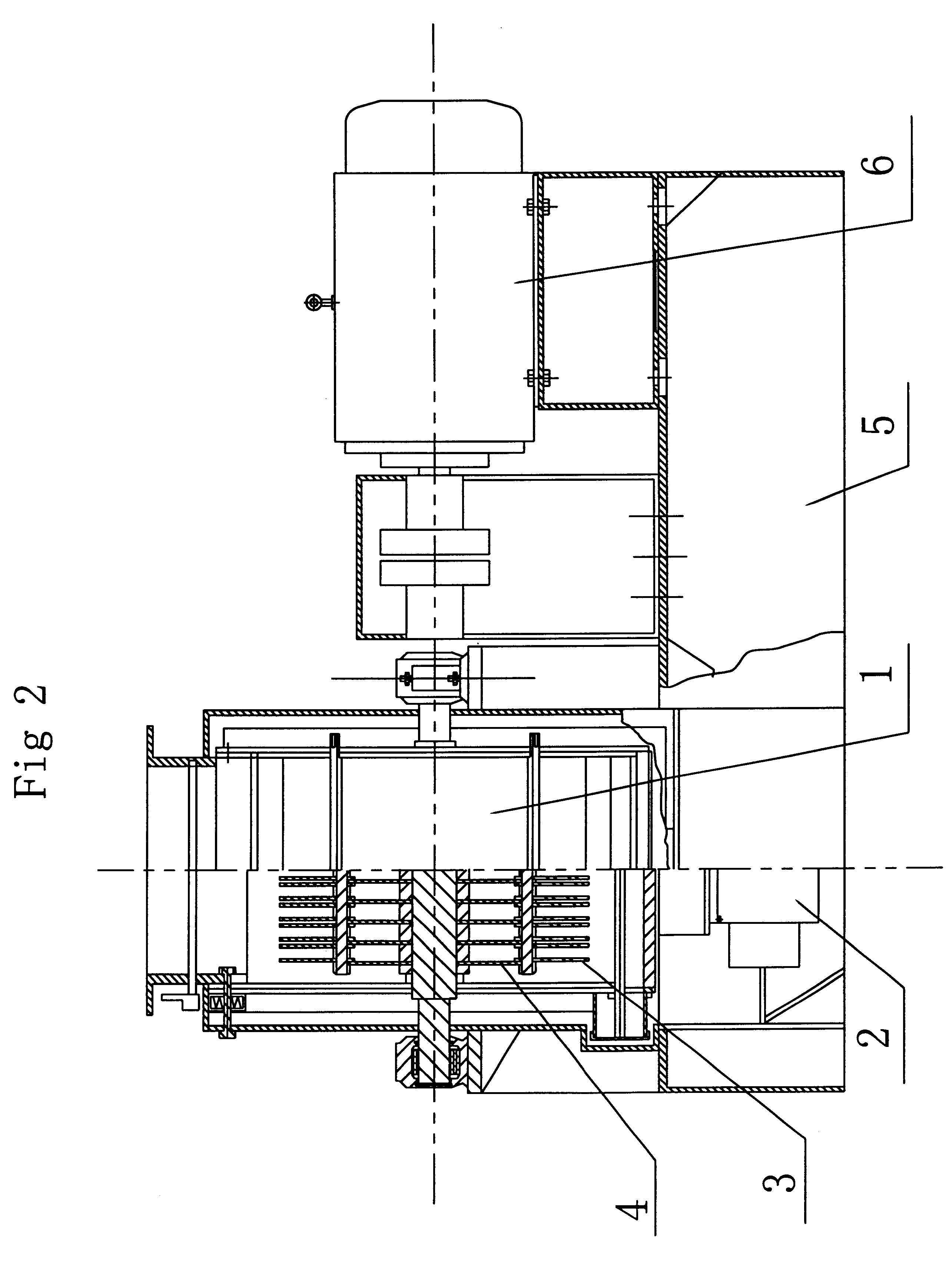2. They may cause the finished material to be uneven in particle size.
3. These types of hammer mills are inefficient.
A. The screening and crushing capability of the hammer mills is relatively inadequate so pulverized particles will not be discharged promptly and may cause repeated
cycling of the material for
processing to the acceptable sizes, with a result that the fine particle ratio is increased, uneven sizes of finished material are produced and the
power consumption is more.
For coarse material with greater sizes and less
layers of material
cycling required, the acting forces of the hammer blades are effected on the surface of the screen, resulting in smooth
discharge of the pulverized particles of the feed material whereas for the fine material, the diameters are far smaller than the clearance between the screen and the hammer and more material
cycling is required, it is more difficult for the acting force of the hammer blades to reach the surfaces of the screen, thus retaining the material on the screen surface, such retention state of the material may
cause blockage of the finished material.
Hence such screened hammer mills are not able to process fine particles of the material with 40 to 140 meshes.
a. Improvement on shapes of the screen sieves--such as fish scaled sieves type of screens (refer to the article "Preliminary Report on the Effect of Scaled Screen Plate" as published on "Shanghai Feed"
magazine Jan. 1994 in China.).
b. Improvement on extended screen surfaces--such as axially fed widening screen type of the hammer mill (refer to the article "Application on Improved Process of Model 91940-40 Economic Feed
Hammer Mill" as published on "China Feed"
magazine, Issue 1, 1995); and also the type of the hammer mill is shown in FIG. 4 of U.S. Pat. No. 4,114,817 (Harris) (Sep. 19, 1978) with such a feature that the surface area of the screen is increased by extending the axially screen width.
c. Further improvements are by having an increasingly rounded screen comer, increasing of screen surface and mounting method, such as vertical rotor type hammer mill with no aspiration installation (refer to the article "Application on Improved Process of Vertical Rotor
Hammer Mill" as published on "China Feed" Issue 1, 1991; various axially feed designs of hammer mills; dipping type hammer mills; and also a type of hammer mill disclosed in FIG. 2 of U.S. Pat. No. 3,790,093 (Mcintyre) (May 2, 1974) has a screen development on the left side, which increases the surface areas, but the screen is considered liable to be blocked by larger size material at a section of the left side, thus failing to achieve the anticipated result. Moreover, this improvement is an eccentric feed design which fails to make full use of the forward and reverse rotation of the hammer, resulting in non-uniform wear of the hammers and the screen.
d. Improvement on aspirating
system of the hammer--refer to the article "
Design Improvement and Study on the Aspirating
System of Hammer Mills--Non-aspirating Vertical Rotor
Hammer Mill" as published on "China Feed" Issue 17, 1995.
e. Improvement on mounting with roll chain end-connected spring and hammer mill aspirating
system with holes at the axial wall and air blow blades patented in China, China Patent No. CN 2156931 (Li Dayan) (Feb. 23, 1994) describes a type of vibrating screen. However, it is not a vibrating screen with an active power source, but the vibration is induced by material impacting screen surfaces with no control of vibrating parameters.
f. Improvement on clearance between the hammer and the screen--the improved clearance between the hammer and the screen of the mill is adjustable (in two steps), which is capable of
processing the feed material with feed sizes of 0.8 to 4.0 mm in diameters. This improvement of hammer mill has extended the range of the material to be processed as compared to conventional mills, but is not applicable for the sizes of 60 to 140 meshes fine material.
Generally speaking, the screen and
machine body of the conventional hammer mills may produce
resonance and
residual vibration when the motor is operating and screen vibration may be caused when the material is impacting the screen surfaces, yet hardly results in desired effect as it is essentially an inactive and passive vibration, of which the vibrating parameters are not able to be controlled.
The simple lateral width design has the functions of extending screen surfaces, break material cycling and improve the angles for discharging, but liable blockage of screen sieves may occur where the clearance between the hammer and the screen is greater and the extended surface of this design fails to be brought into full display.
That is why the general comment of the feed industry considered such screen
shape design is invalid.
 Login to View More
Login to View More  Login to View More
Login to View More 


